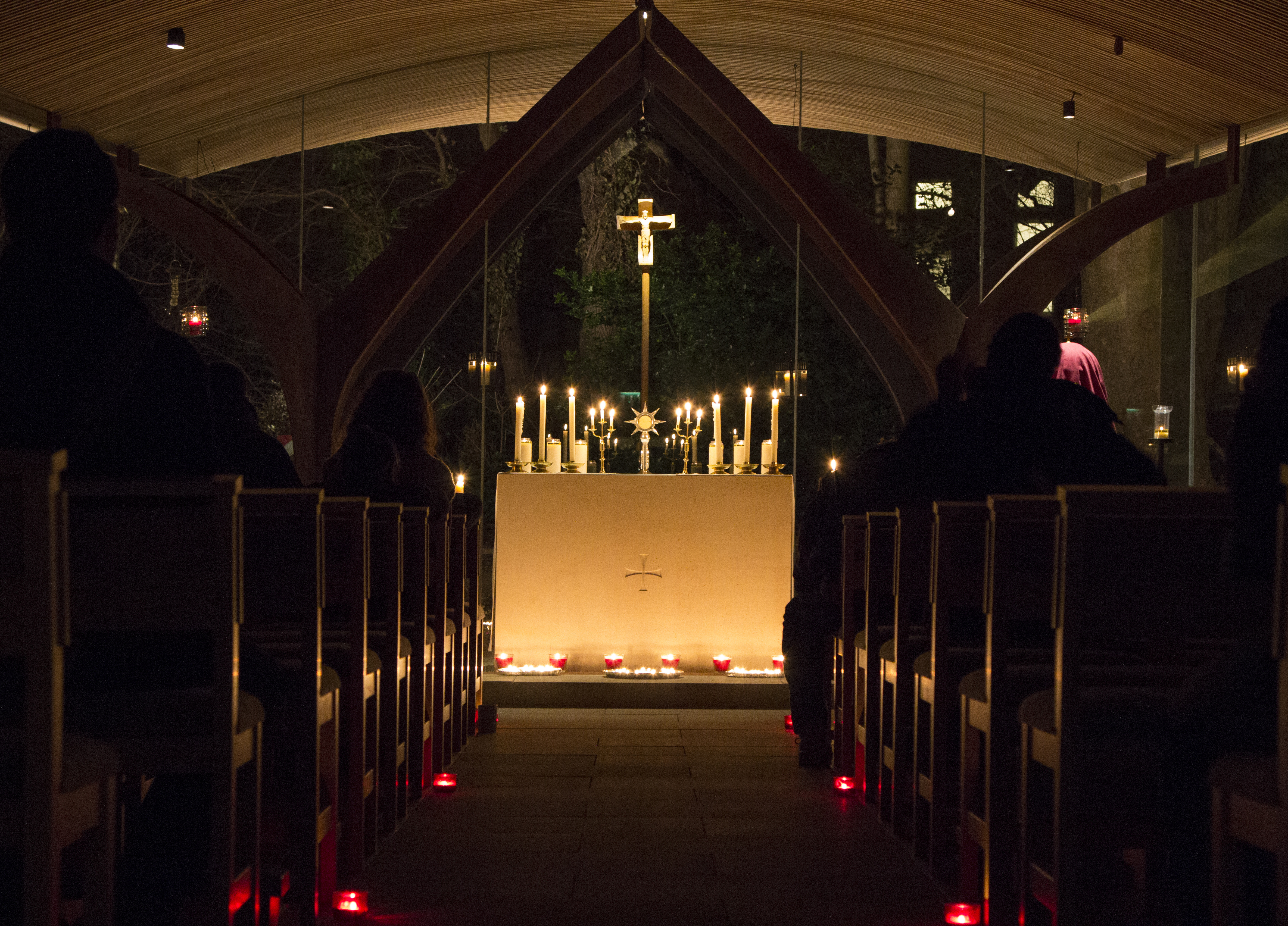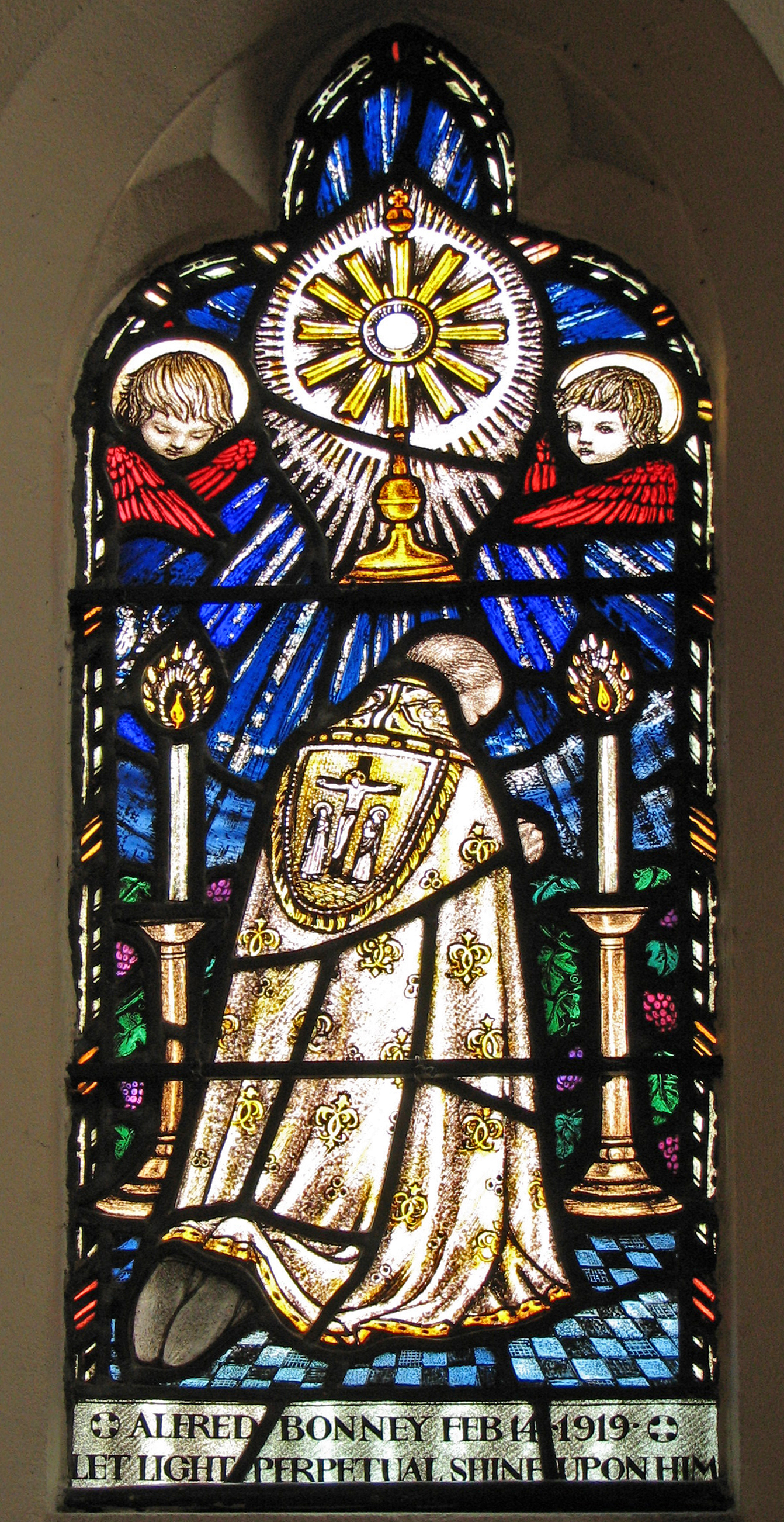‘I look at him and he looks at me.’ This is what a certain peasant of Ars used to say to his holy Curé about his prayer before the Blessed Sacrament reserved in the tabernacle. In Eucharistic Adoration, we are privileged not just to contemplate Christ in the tabernacle, but to have Christ physically present before us, so that we may gaze upon Our Lord and Saviour with adoring eyes.


The origins of this popular devotion have several sources. Its initial form derives from Holy Thursday and watching at the altar of repose, following the celebration of the Mass of the Lord’s Supper, in which way we beautifully bear witness to the connection between the celebration of the memorial of the Lord's Sacrifice and his continued presence in the Sacrament of the Altar.
Around the fourth century monasteries began to reserve the Eucharist, and by the 11th century, reservation, mainly for the Viaticum, was a regular feature in churches. However, it is not until the late 11th or early 12th Century, and the refining of the Church’s teaching on the Eucharist at Lateran IV, prompted by the false teaching being proclaimed by the monk, Berengar of Tours, that we really see a strong devotion developing for prayer in front of the Blessed Sacrament. From this point on we see numerous Eucharistic devotions like processions, visits to the Blessed Sacrament, and other prayers focused on the reserved Sacrament, becoming part of Catholic life.

About a century later, to counter the falsehood being promulgated by Peter Cantor, that transubstantiation of the bread only took place when the priest had pronounced the words of consecration over both the bread and wine, a custom arose and spread of adoring the Host immediately after the words, Hoc est enim corpus meum, and by a natural transition the practice of showing it to the people for this purpose arose. Times of extended exposition of the Blessed Sacrament, outside the Mass, grew out of this action, born out of a natural desire to spend longer gazing upon Our Lord. Eventually a blessing with the exposed Eucharist, or Benediction, developed.
Eucharistic Adoration has continued unabated since that time and continues to bear great fruits in the lives of faithful individuals and of movements associated with it. In fact at the present time there seems to be a resurgence of Adoration amongst many of those who wish to have a deeper relationship with Christ. For, as people become ever more aware of the unceasing distractions of the world, it seems even more important to “spend quality time” (in modern parlance) with our loved ones, lest our relationship wither.
Finally, the fitting way for any Dominican to end a reflection on Eucharistic Adoration is with these words of St Thomas Aquinas OP, familiar throughout the Universal Church:
Tantum ergo Sacramentum veneremur cernui: et antiquum documentum novo cedat ritui: praestet fides supplementum sensuum defectui. Genitori, Genitoque laus et jubilatio, salus, honor, virtus quoque sit et benedictio: Procedenti ab utroque compar sit laudatio. | Down in adoration falling, Lo! the sacred Host we hail, Lo! oe'r ancient forms departing Newer rites of grace prevail; Faith for all defects supplying, Where the feeble senses fail. To the everlasting Father, And the Son Who reigns on high With the Holy Spirit proceeding Forth from each eternally, Be salvation, honour blessing, Might and endless majesty. |
No comments:
Post a Comment